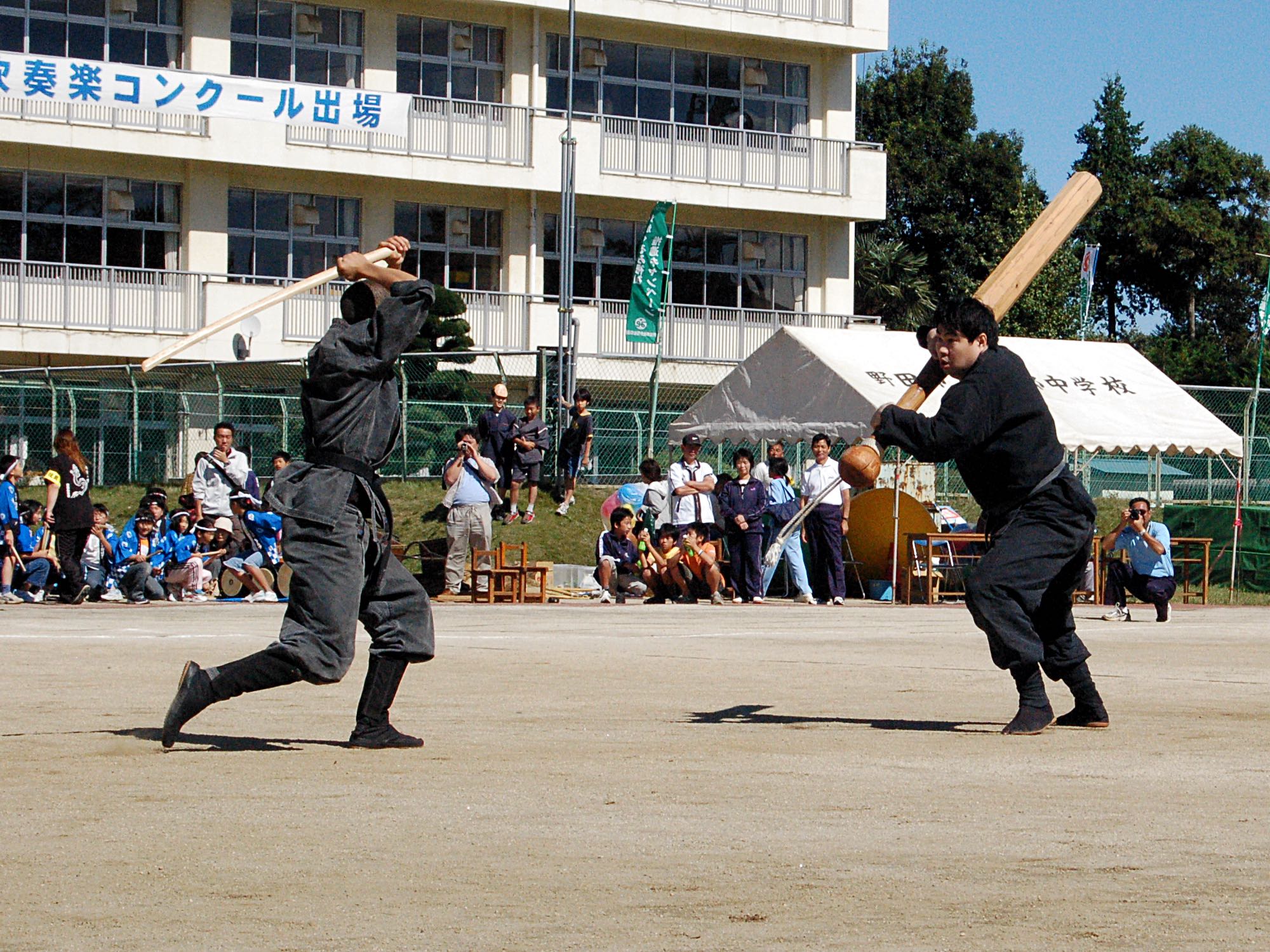Month: March 2014
-
Tucson Taikai 1995
När jag besökte Japan för träning 1992 och 1993 blev jag bekant med en amerikansk bujinkanutövare med namnet Alex (numera utkastad från Bujinkan, men det är en helt annan historia). Han berättade att han tillsammans med några andra amerikaner skulle anordna ett Tai Kai i Tucson, Arizona år 1995. ”Jag kommer”, sa jag. Så i…
-
Ninjago från LEGO [Från Tetsu’s gamla blog]
Man hittar alltid ninjas nånstans och i alla möjliga former. Här har LEGO släppt nån story om fyra ninjas och mästare. Låter bekant! Här är dom mästare på spinjitzu.
Enligt Mats så finns det nåt sort spel också. Inte för att jag sett det.
Men vad gör dom inte för att dra…
-
The Grandmaster’s Book Of Ninjatraining
Som första bok ut blir det “The Grandmaster’s book of ninjatraining“, skriven av Hatsumi Masaaki. Det är ingen bok fylld med tekniker, utan är en “frågor och svar” bok. Tre utövare, Doron Navon, Jack Hoban och Charles Daniels, fick chansen att ställa vilka frågor som helst till Soke om träning, mat, budo m.m. Boken är…
-
Träna budo
Måhända att rubriken inte riktigt överensstämmer med inlägget, men denna gång hittar jag inte nån rubrik på texten. Jag har snott inlägget från Duncan Stewart på Facebook. Nu har inte alla Facebook eller kanske inte läser överallt där. Nåväl……. Här är länken till originaltexten: https://www.facebook.com/BujinkanTasmaniaTokuBuRyuSuiDojo/photos/….. The Dojo is not a mere social outlet, nor a…
-
“Sanningen” om gogyo no kata
Det finns många som tycker och tänker om alla möjliga saker på den fina webben. Jag kommer fortsätta slänga upp saker som jag anser vara relevanta för oss inom Bujinkan. Läs följande blog från en kille i Colorado. Den handlar om gogyo no kata (san shin no kata) och den elementsanknytning som fanns en gång…
-
Lära eller träna?
Jag läste en blog med rubriken “Vad är skillnaden mellan att lära sig och att träna?” Läs citatet! Hela inlägget hittar ni här: http://www.feldengood.se/2014/03/09/vad-ar-skillnaden-mellan-att-lara-sig-och-att-trana/?utm_source=hootsuite&utm_campaign=hootsuite Vad är skillnaden mellan träning och lärande? Jag skulle förenklat vilja säga att när man tränar gör man något man redan kan men när man lär sig så gör man något man…
-
Ninja Ninpô Gahô av Hatsumi Masaaki
Denna gång blir det en bok riktad till barn. Detta har jag fått berättat för mig, för jag läser fortfarande inte japanska. Boken heter “Ninja Ninpô Gahô”. Den är skriven Hatsumi Sensei och han berättar (vad jag förstått) om den historiska ninjan och vilka tekniker som användes. Det är hela kitet som visas, hur man…

